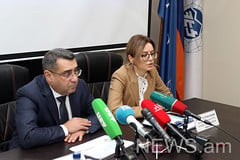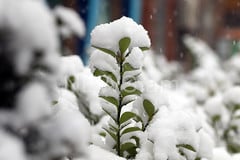
After the devastating pandemic and 44-Day War of 2020 for the Armenian tourism sector, the sector is now facing new challenges related to the military and political situation and the economic crisis around the world.
Tourism is a very sensitive sphere to such phenomena as pandemic, instability, especially the military situation. All this has a negative impact on tourism.
Azerbaijani aggression
Starting from September 13, the Azerbaijani armed forces began intensive shelling of Armenian positions from artillery and large-caliber small arms in the direction of Goris, Sotk and Jermuk. The adversary also used UAVs. Later, Azerbaijan also used artillery fire in other directions. According to official data, the number of casualties on the Armenian side is 208 people. As a result of adversary aggression civilians suffered and more than 200 civil objects were destroyed. Several thousands of them left their houses.
Head of the Tourism Federation of Armenia Mekhak Apresyan said that today bookings are cancelled due to Azerbaijani aggression. Besides, some countries advise their citizens not to visit Gegharkunik, Syunik and Vayots Dzor regions, because the adversary's aggression was carried out in the direction of these regions.
He expressed hope that the situation would quickly stabilize and international partners would be able to be informed that there are no problems with receiving guests.
Jermuk, which is one of Armenia's tourist centers and is rich with mineral water resources, also came under adversary fire.
Jermuk is known not only for its sanatoriums, the city is also a sport, youth and cultural center.
In his interview with Armenian News-NEWS.am, the expert recalled that a tourism development program was implemented here with the participation of Swiss specialists.
Apresyan noted with regret that the criminal aggression of Azerbaijan is sure to have a negative impact on tourist visits.
Mobilization in Russia
Mobilization declared in Russia was added to Azerbaijani aggression, i.e. departure from Russia was limited. This means that tourist flows from Russia to Armenia will decrease.
The head of the NGO is convinced that the current serious flow of citizens from Russia to Armenia will be short-lived.
The biggest tourist flow traditionally comes from Russia. Tourists from European countries and other destinations have also started to activate.
Within first 6 months of this year 588 thousand tourists arrived in Armenia: 54,5% came from Russia (3,1 increase), 12,2% came from the EU countries (3,4 increase). Visitors from Ukraine amounted to 1.3%, which is 75% more than last year.
In the first half of the year 2.4 times more tourists arrived in Armenia than in the same period last year (243,067).
Up to the beginning of 2022, growth was also recorded. But still the pace is far from the picture of 2019. Then for the whole year almost 1.9 million tourists visited Armenia.
Economic Factor
Apresyan pointed to another obstacle that arose before the Azerbaijani aggression.
"We are talking about the revaluation of the Armenian dram against the dollar and euro at the level of 20%, which had and has a negative impact on the growth in the number of tourists who pay for their holidays in dollars and euros.
The already unstable situation in the world and the events in Ukraine have led to inflation around the world. Armenia was not spared from this phenomenon. Here in July, the figure was 9.3%. All this led to a 30% increase in the price of tourist products," the expert added.
According to him this has influenced the structure of the incoming tourism, so the vast majority of tourists come from Russia.
As for Chinese tourists and tourists from Asia in general, not very many come from there either, as they have been wary since the beginning of the pandemic.
According to a representative of the sphere, in current conditions one tourist in Armenia on average spends about $1200. About 10 years ago, this figure made USD 700-800.
Mekhak Apresyan noted that compared to past years, the growth is ensured by individual tourism.
He explained that organized tourism, which has not yet entered the path of stable recovery, accounts for a very small share of the total growth.
"Organized tourism is a responsible sphere, and tour operators are cautious due to all the events, including military actions and currency fluctuations. All this prevents the recovery of organized tourism. In addition, there are still no indicators of the tourist flow, which would allow them to get on the road to recovery. This suggests that tour operators have almost nothing to gain from the growth. Moreover, some of them suffered losses because of the exchange rate fluctuations, because initially they agreed to provide services at a rate of 480 drams per 1 dollar, whereas now the dollar has fallen significantly, and until recently fluctuated at 400 drams. But local tour operators could not change the prices because it would put them and the country's reputation at risk," Apresyan said.
Aram Danielyan






















